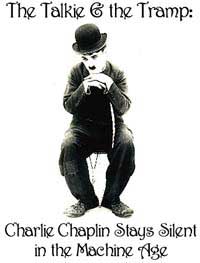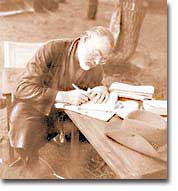47d. Books and Movies

Charlie Chaplin, whose slapstick comedy made him a superstar of early films
They were called the Lost Generation. America's most talented writers of the 1920s were completely disillusioned by the world and alienated by the changes in modern America. The ghastly horrors of trench warfare were a testament to human inhumanity. The ability of the human race to destroy itself had never been more evident. The materialism sparked by the Roaring Twenties left many intellectuals empty. Surely there was more to life than middle-class conformity, they pined. Intolerance toward immigrants and socialists led many writers to see America as grossly provincial. Thus the literature of the decade was that of disaffection and withdrawal, and many of America's greatest talents expatriated to Europe in despair.
The Writers

Typical of the writing of the age were the desolate landscapes of Ernest Hemingway
F. Scott Fitzgerald wrote about the excesses of the Jazz Age. He and his wife Zelda operated among the social elite in New York, Paris, and on the French Riviera. The Great Gatsby, his most famous novel, highlights the opulence of American materialism while harshly criticizing its morality. Ernest Hemingway wrote of disillusioned youths wandering Europe in the wake of World War I in search of meaning in The Sun Also Rises. T.S. Eliot commented on the emptiness of American life in his epic poem The Waste Land. American theater earned worldwide acclaim in the 1920s. The foremost playwright of this newly respected American genre was Eugene O'Neill, noted for Desire Under the Elms and A Long Day's Journey Into Night. The sharpest critic of American middle-class lifestyle was Sinclair Lewis. In Main Street, he takes aim on small-town American life. Babbitt denounced the emptiness of middle-class life in the city. After a string of successful novels, Lewis brought honor to American writers by becoming the first to win a Pulitzer Prize for literature.
The Movies
While the written page marked a quest for intellectual insight, the movie industry catered to mass audiences. Every town seemed to have at least one theater for the new craze. The early decade saw millions flock to the screens to see silent action films and slapstick comedies by the likes of Charlie Chaplin. Sex appeal reigned supreme as American women swooned for Rudolph Valentino and American men yearned for the all-American beauty Mary Pickford. To keep standards of morality high in the film industry, the Hays Office stifled artistic license by censoring objectionable scenes. Because of soaring profits, studios sought quantity rather than quality. Therefore the decade saw few pictures of merit. The first talking picture, The Jazz Singer, appeared in 1927. Walt Disney introduced Mickey Mouse to the American public the following year in Steamboat Willie. By the end of the decade over 100 million viewers attended moviehouses each week, more than the number of weekly churchgoers.






